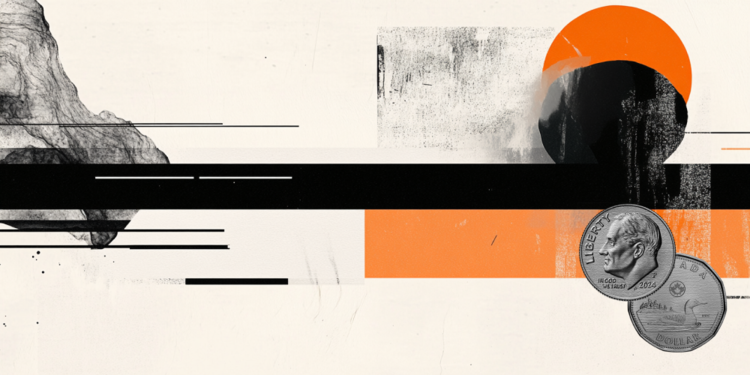- USD/CAD moves little as traders adopt caution ahead of economic data from both countries.
- Headline PCE is forecast to rise 2.6% YoY, while core PCE is expected to increase 2.9% in July.
- The commodity-linked CAD could strengthen on the back of rising crude Oil prices.
USD/CAD halts its three-day losing streak, hovering around 1.3750 during the Asian trading hours on Friday. The pair maintains its position as the US Dollar (USD) advances as the United States (US) economy grew in the second quarter. The US Bureau of Economic Analysis (BEA) released Gross Domestic Product (GDP) Annualized data on Thursday, showing an increase of 3.3% in the second quarter, a faster pace than the initially estimated 3.1% increase and 3.0% prior.
Traders are awaiting the July Personal Consumption Expenditures (PCE) Price Index due later in the North American session, the last key inflation release before the Federal Reserve’s September meeting. Headline PCE is forecast to rise 2.6% year-over-year in July, while core PCE is expected to increase 2.9% over the same period. The upbeat prints may fade the ongoing dovish sentiment surrounding the US Federal Reserve (Fed) policy outlook. Moreover, Canada’s GDP data will also be eyed on Friday.
The market sentiment turns cautious over Fed independence concerns, driven by the recent remarks from US Vice President JD Vance. Vance confirmed, in an interview with USA Today on Thursday, the end of the Federal Reserve’s autonomy. He noted: “I don’t think we allow bureaucrats to make decisions about monetary policy and interest rates without any input from the people that were elected to serve the American people…POTUS is much better able to make these determinations.”
The USD/CAD may lose its ground as the commodity-linked Canadian Dollar (CAD) may gain ground amid improved crude Oil prices. It is worth noting that Canada is the largest Oil exporter to the United States (US). West Texas Intermediate (WTI) Oil price remains stronger for the third consecutive day, trading around $64.10 per barrel at the time of writing.
Crude Oil prices gain ground amid persistent geopolitical tensions and supply risks, as traders track Ukrainian drone strikes on Russian export terminals and await potential comments from US President Donald Trump on tighter sanctions.
Canadian Dollar FAQs
The key factors driving the Canadian Dollar (CAD) are the level of interest rates set by the Bank of Canada (BoC), the price of Oil, Canada’s largest export, the health of its economy, inflation and the Trade Balance, which is the difference between the value of Canada’s exports versus its imports. Other factors include market sentiment – whether investors are taking on more risky assets (risk-on) or seeking safe-havens (risk-off) – with risk-on being CAD-positive. As its largest trading partner, the health of the US economy is also a key factor influencing the Canadian Dollar.
The Bank of Canada (BoC) has a significant influence on the Canadian Dollar by setting the level of interest rates that banks can lend to one another. This influences the level of interest rates for everyone. The main goal of the BoC is to maintain inflation at 1-3% by adjusting interest rates up or down. Relatively higher interest rates tend to be positive for the CAD. The Bank of Canada can also use quantitative easing and tightening to influence credit conditions, with the former CAD-negative and the latter CAD-positive.
The price of Oil is a key factor impacting the value of the Canadian Dollar. Petroleum is Canada’s biggest export, so Oil price tends to have an immediate impact on the CAD value. Generally, if Oil price rises CAD also goes up, as aggregate demand for the currency increases. The opposite is the case if the price of Oil falls. Higher Oil prices also tend to result in a greater likelihood of a positive Trade Balance, which is also supportive of the CAD.
While inflation had always traditionally been thought of as a negative factor for a currency since it lowers the value of money, the opposite has actually been the case in modern times with the relaxation of cross-border capital controls. Higher inflation tends to lead central banks to put up interest rates which attracts more capital inflows from global investors seeking a lucrative place to keep their money. This increases demand for the local currency, which in Canada’s case is the Canadian Dollar.
Macroeconomic data releases gauge the health of the economy and can have an impact on the Canadian Dollar. Indicators such as GDP, Manufacturing and Services PMIs, employment, and consumer sentiment surveys can all influence the direction of the CAD. A strong economy is good for the Canadian Dollar. Not only does it attract more foreign investment but it may encourage the Bank of Canada to put up interest rates, leading to a stronger currency. If economic data is weak, however, the CAD is likely to fall.
Read the full article here


